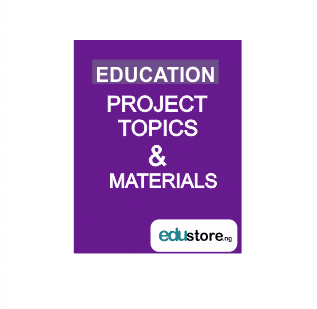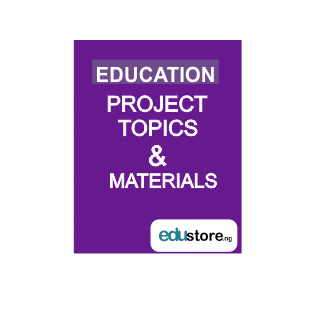ABSTARCT
This study examines the influence of environmental factors on teaching learning process of economics in secondary schools. Primary method of data collection was used. One way analysis of variance (ANOVA) and cross tab Chi Square was used to analyse the data. Findings from the study revealed that the environmental factors examined in this study have significant effect on teaching learning process. Specifically, the findings revealed that physical facilities have significant effect on teaching learning process. The finding also shows that significant effect exist between instructional materials and teaching learning process of economics in Secondary schools. Moreover, the result also shows that class size have significant effect on teaching learning process in secondary schools. Overcrowded classroom tends to reduce the productivity of the students because there will be reduction in efficiency. The result also shows that school location have significant effect on teaching learning process in schools. Based on the findings, this study recommends: that there is the need for government at the local, state and federal levels to provide adequate material resources to rural and urban schools to enhance teaching and learning processes. Classes should also be made manageable by creating additional or more classrooms in a class that is highly populated. Government should allocate more resources for the improvement of capital infrastructure in the schools. The principals should also plan and adequately utilize the little funds available for developing priority areas in the school so as to enhance learning.
TABLE OF CONTENT
1.0 Introduction
1.1 Background to the study
1.2 Statement of the problem
1.3 Purpose of the study
1.4 Research hypothesis
1.5 Significance of the study
1.6 Delimitations of the study
1.7 Definition of terms
2.0 Review of Literature
2.1 Theoretical framework
2.2 Conceptual framework
3.0 Research Methodology
3.1 Introduction
3.2 Research design
3.3 Population of the study
3.4 Sample and sampling technique
3.5 Research instrument
3.6 Validity of the Instrument
3.7 Method of data collection
3.8 Reliability of the Instrument
3.9 Data analysis
CHAPTER FOUR
4.0 Result and Discussion
4.1 Introduction
4.2 Descriptive Analysis of Data
4.3 Test of Hypothesis
4.4 Discussion of Finding
5.1 Introduction
5.2 Summary of Finding
5.3 Conclusions
5.4 Implication of the study
5.5 Recommendations
5.6 Limitation of the Study
5.7 Suggestion for further Study
DOWNLOAD COMPLETE WORK- For Reference Only: Materials are for research, citation, and idea generation purposes and not for submission as your original final year project work.
- Avoid Plagiarism: Do not copy or submit this content as your own project. Doing so may result in academic consequences.
- Use as a Framework: This complete project research material should guide the development of your own final year project work.
- Academic Access: This platform is designed to reduce the stress of visiting school libraries by providing easy access to research materials.
- Institutional Support: Tertiary institutions encourage the review of previous academic works such as journals and theses.
- Open Education: The site is maintained through paid subscriptions to continue offering open access educational resources.





